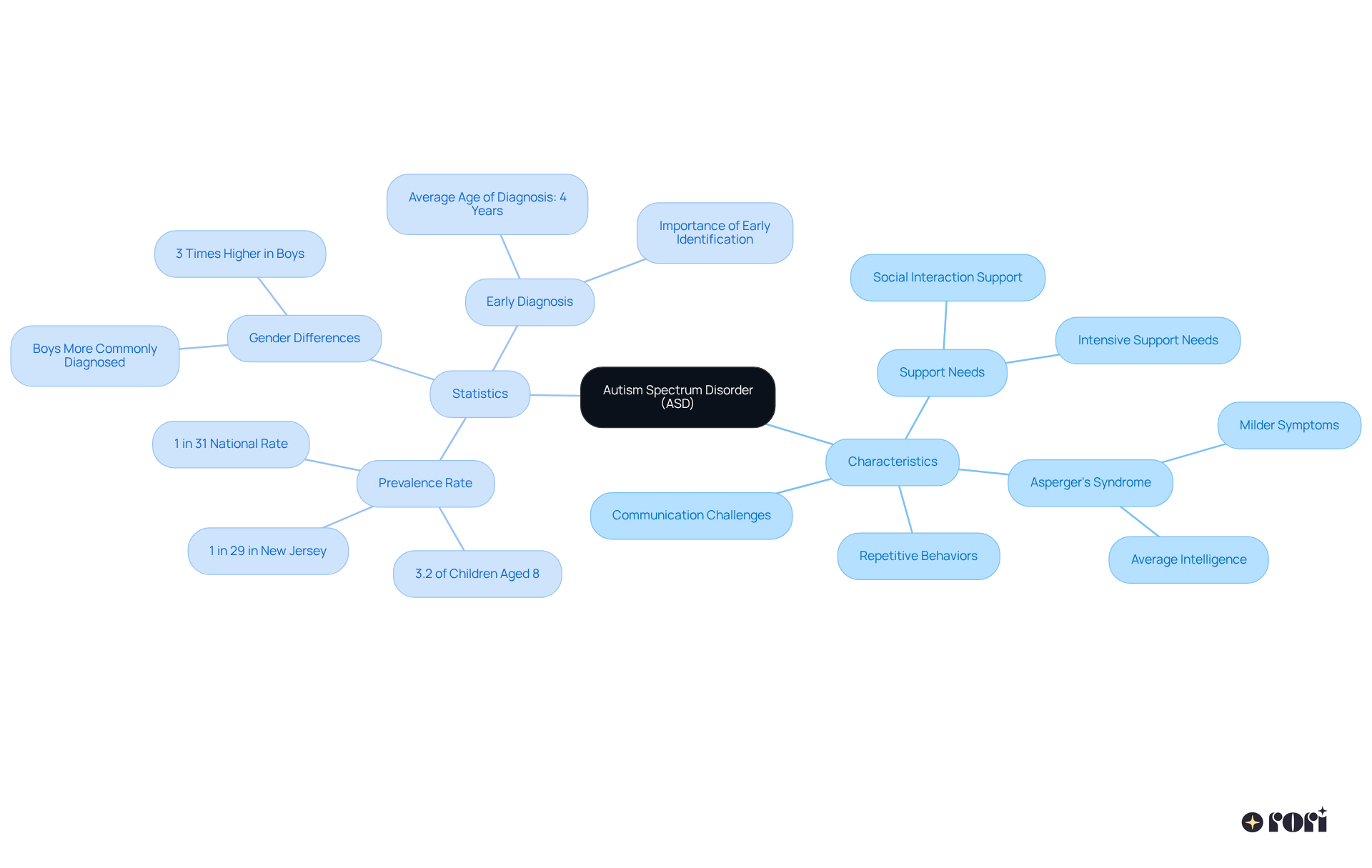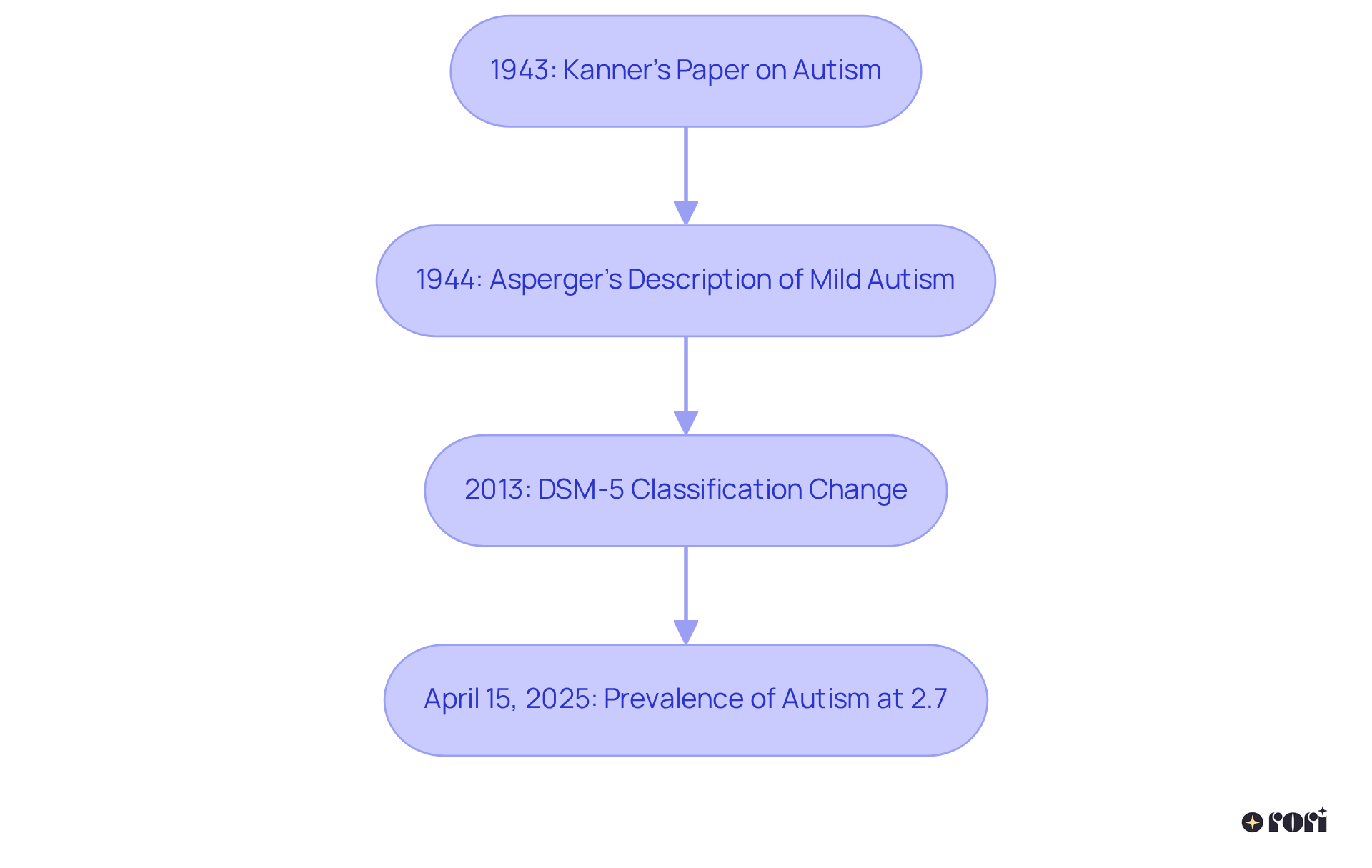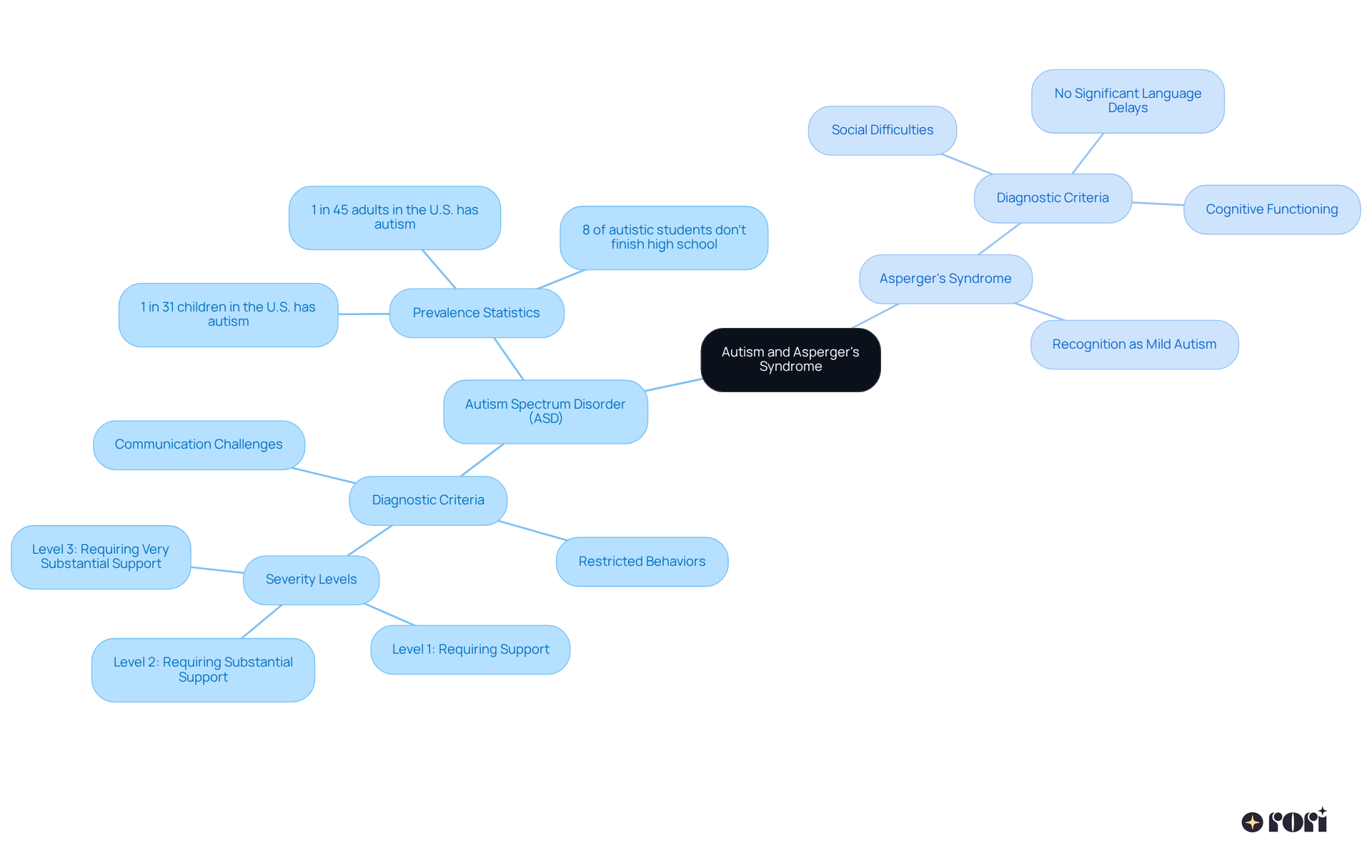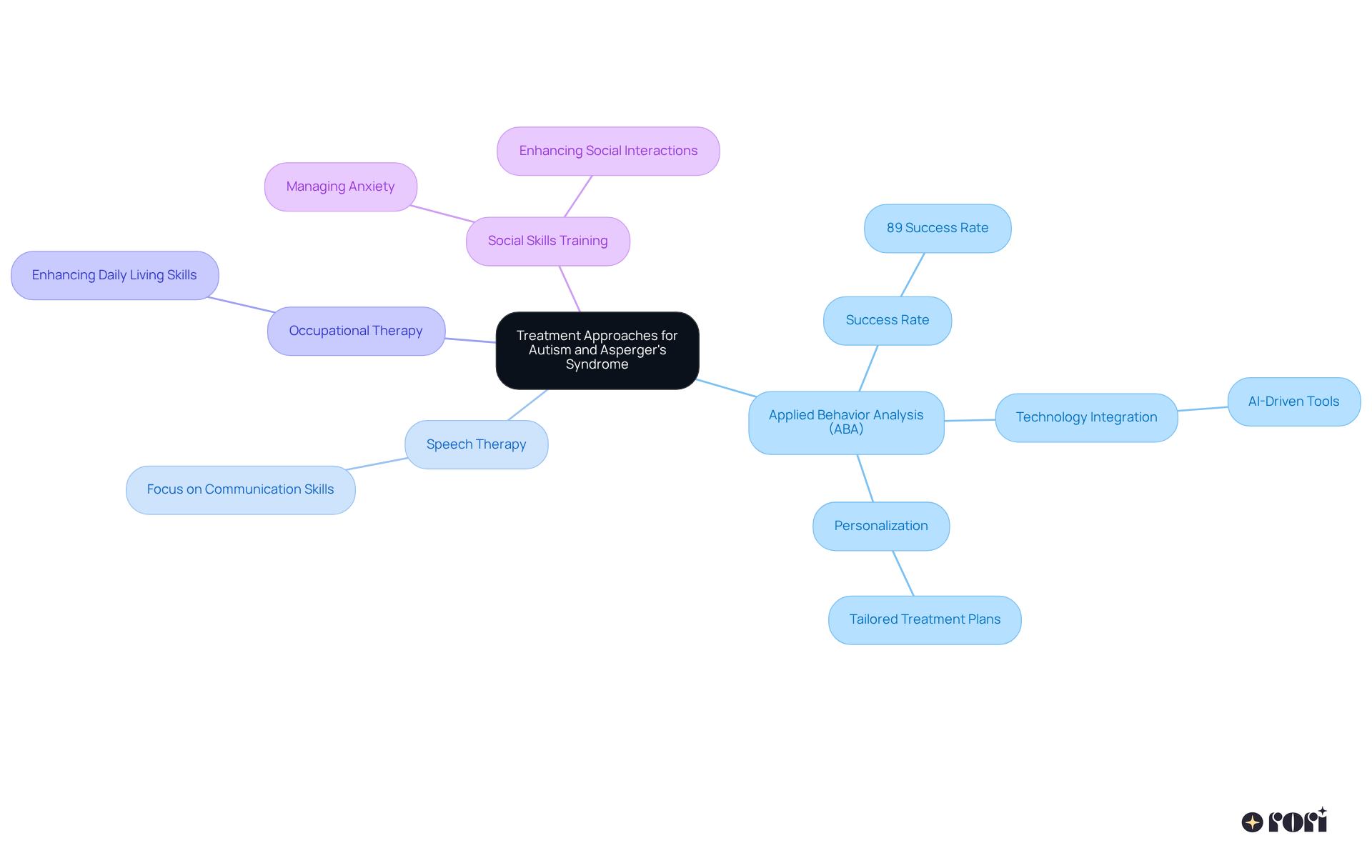Asperger's syndrome is often seen as a form of mild autism, fitting into the broader Autism Spectrum Disorder (ASD) category. It's characterized by milder symptoms and typically average or above-average intelligence. While individuals with Asperger's may encounter some challenges in social interactions and communication, they usually don't experience significant language delays. This highlights the importance of tailored support and effective treatment strategies for those on the spectrum. Let’s explore this together! 🌟
Understanding the complexities of Autism Spectrum Disorder (ASD) can feel both enlightening and a bit overwhelming. Among the different classifications within this spectrum, Asperger's syndrome—now recognized as a form of mild autism—has its own unique characteristics and challenges. Let’s explore this together!
This article will delve into the distinctions between Asperger's and other forms of autism, shedding light on the symptoms, diagnostic criteria, and treatment approaches that can significantly impact the lives of those affected. How do these differences shape the support and interventions available for individuals navigating this intricate landscape? We’re here to help you every step of the way!
Autism Spectrum Disorder (ASD) is a complex neurodevelopmental condition that can present challenges in how individuals interact with others, communicate, and exhibit repetitive behaviors. It includes a wide range of symptoms and varying degrees of impairment. Interestingly, Asperger's condition, which used to be a separate diagnosis, is now classified as Aspergers mild autism under the ASD umbrella. This means that individuals with Asperger's, which is Asperger's mild autism, might display milder symptoms, particularly in their communication skills, and many have average or above-average intelligence. They often dive deeply into specific interests but may find it tricky to pick up on social cues. However, they generally don’t face significant challenges in language development.
Recent statistics reveal that about 3.2% of children aged 8 years are diagnosed with ASD, translating to a national rate of 1 in 31 individuals identified with the disorder. It's noteworthy that boys are diagnosed at rates more than three times higher than girls, making ASD significantly more common in boys. Understanding these characteristics is vital for effective diagnosis and intervention. Early identification—usually around the age of 4—can lead to much better outcomes. Psychologists often emphasize that while individuals with Asperger's syndrome, which is Asperger's mild autism, may excel in certain areas, they frequently need support in navigating social interactions and improving communication skills. Also, around one in four autistic youths have considerable support needs, highlighting the varying levels of assistance required among those on the spectrum. This nuanced understanding of ASD, which is Aspergers mild autism, is essential for crafting effective treatment plans and promoting independence in affected individuals. Let’s explore this together! We’re here to !

The concept of autism first emerged in the early 20th century, thanks to Leo Kanner's 1943 paper that described children displaying similar behavioral patterns. Then, in 1944, Hans introduced what is Asperger's mild autism, recognizing a unique group of children who faced social challenges yet had strong language skills. For many years, the understanding of Asperger's, which is Asperger's mild autism, was seen as a separate condition until the DSM-5 (Diagnostic and Statistical Manual of Mental Disorders, Fifth Edition) brought it into the broader category of ASD in 2013. This shift mirrored a deeper understanding of autism's spectrum nature and the importance of a unified approach to diagnosis and treatment.
As of April 15, 2025, the prevalence of autism among youth in the U.S. stands at 2.7%. This statistic emphasizes the significance of these classifications. Moreover, we’ve seen remarkable increases in ASD diagnosis rates, such as a staggering 315% rise among Hispanic children from 2011 to 2022. This evolving understanding highlights the need for tailored support and resources for individuals on the spectrum.
Andy Shih, chief science officer at Autism Speaks, shares, 'This study is a significant step forward in our community. It shows where we’re making progress, but also where we need to improve, especially when it comes to adults, women and girls, and diverse communities.' Understanding this historical context is essential for families and professionals alike, as it shapes . Let’s explore this together and ensure everyone gets the support they need!

The DSM-5, which came out in May 2013, lays out specific criteria for diagnosing Autism Spectrum Disorder (ASD). This includes ongoing challenges in communication and interaction in various situations, along with those restricted and repetitive behaviors we often hear about. It's interesting to note that this syndrome is often recognized as Asperger's mild autism, which used to be seen mainly as social difficulties without significant language delays or cognitive issues.
Now, with the DSM-5, it is recognized that Asperger's is mild autism and individuals diagnosed with it are included under the broader ASD umbrella. This change really highlights how important it is to have thorough evaluations that recognize each person's unique strengths and challenges. It’s all about understanding the whole person, right?
Clinicians emphasize that comprehensive assessments are crucial for grasping the full range of behaviors and needs. This ensures that every individual gets the most appropriate care possible. And did you know that around 1 in 31 kids in the U.S. has autism? This statistic really underscores the need for . So, let’s explore this together and ensure that every child receives the support they deserve!

When it comes to autism, individuals can show a wide range of symptoms. Many face challenges in communication and interpersonal skills, and some may also have co-occurring intellectual disabilities, often with below-average IQ. However, those with autism spectrum disorder typically have average to above-average intelligence and don’t show cognitive delays in their early years. In fact, they might shine in specific areas like math or music!
Socially, navigating social cues can be tough for individuals with autism. They may find it hard to form peer relationships, yet they often have a strong desire to connect with others. You'll find that and intense interests are common in both groups. The way these behaviors show up can vary quite a bit. For instance, younger children with autism might engage in more noticeable repetitive actions, while those with conditions that is aspergers mild autism might focus their attention on specialized interests, leading to remarkable skills in those areas.
Interestingly, children with autism spectrum disorder are often diagnosed later on, sometimes during their teenage or adult years. Understanding these nuances is so important for creating effective support strategies. As Tony Attwood points out, individuals with autism spectrum disorder can be emotionally and socially behind their chronological age, which can make their interactions with others a bit more complex.
Let’s explore this together! Recognizing these differences can help us tailor the right interventions and support for our loved ones.

When discussing treatment approaches for autism, it is important to recognize that what is Asperger's mild autism includes a whole range of available interventions! These include:
ABA therapy stands out as a particularly effective option, boasting an impressive success rate of over 89% in improving adaptive behaviors and reducing challenging ones. Rori Behavioral Innovations Inc. shares, "Studies have consistently shown that ABA therapy has an over 89% success rate in treating children with ASD."
For those with Asperger's syndrome, which is considered Asperger's mild autism, the focus often shifts toward social skills training and cognitive behavioral therapy (CBT) to help manage anxiety and enhance social interactions. Personalizing treatment is key—this allows us to consider each individual's unique strengths and challenges, along with family preferences.
Current trends are exciting, too! The integration of technology, like AI-driven tools, is making a significant impact. These tools provide data-driven insights into progress and help identify areas needing extra attention. Plus, children who receive at least 25 hours of ABA therapy each week show remarkable improvements in their studying and learning abilities. This approach not only empowers clinicians and families but also nurtures a collaborative environment, which is essential for successful outcomes in autism care.
With around 1 in 36 (2.8%) 8-year-old children identified with autism spectrum disorder according to the CDC, understanding is more crucial than ever. And let’s not forget the importance of parent-led ABA solutions—they highlight the vital role families play in the treatment process.
Let’s explore this together! We’re here to help you every step of the way!

Asperger's syndrome, now recognized as a form of mild autism within the Autism Spectrum Disorder (ASD) classification, presents a unique set of characteristics that need careful understanding and tailored support. This article has explored the distinctions and similarities between Asperger's and other forms of autism. We’ve highlighted the nuances in symptoms, diagnostic criteria, and treatment approaches. Recognizing that individuals with Asperger's often navigate social interactions differently while exhibiting average or above-average intelligence shows us that a one-size-fits-all approach to autism care just won't cut it.
Key points we discussed include:
It’s essential to identify early and understand the varied support requirements among individuals on the spectrum. We also touched on innovative therapies, like Applied Behavior Analysis and cognitive behavioral therapy, which can really enhance the quality of life for those diagnosed with Asperger's syndrome.
Ultimately, fostering a deeper understanding of Asperger's as a form of mild autism is crucial for creating supportive environments that empower individuals to thrive. As our society evolves in its approach to autism, let’s advocate for inclusive practices and ensure that everyone receives the understanding and resources they need. Engaging with this topic not only enhances awareness but also encourages a more compassionate and informed community that values the unique strengths of all individuals on the spectrum. Let’s explore this together and continue to support each other on this journey!
What is Autism Spectrum Disorder (ASD)?
Autism Spectrum Disorder (ASD) is a complex neurodevelopmental condition that affects how individuals interact with others, communicate, and exhibit repetitive behaviors. It encompasses a wide range of symptoms and varying degrees of impairment.
How is Asperger's syndrome related to ASD?
Asperger's syndrome, which was previously considered a separate diagnosis, is now classified as Asperger's mild autism under the ASD umbrella. Individuals with Asperger's may show milder symptoms, especially in communication skills, and often have average or above-average intelligence.
What are some common characteristics of individuals with Asperger's mild autism?
Individuals with Asperger's mild autism often have deep interests in specific topics but may struggle with social cues. They typically do not face significant challenges in language development.
What are the current statistics on autism diagnoses?
Approximately 3.2% of children aged 8 years are diagnosed with ASD, which translates to a national rate of 1 in 31 individuals. Boys are diagnosed at rates more than three times higher than girls.
Why is early identification of ASD important?
Early identification, usually around the age of 4, can lead to much better outcomes for individuals with ASD. It allows for timely intervention and support in communication and social interactions.
What support needs do individuals with ASD typically have?
Around one in four autistic youths have considerable support needs. While some individuals may excel in certain areas, they often require assistance in navigating social situations and improving communication skills.
What was the historical context of autism and Asperger's syndrome?
The concept of autism emerged in the early 20th century, with Leo Kanner's 1943 paper describing common behavioral patterns. In 1944, Hans Asperger recognized a unique group of children with social challenges but strong language skills. Asperger's condition was classified under ASD in the DSM-5 in 2013, reflecting a unified approach to diagnosis and treatment.
What are the current prevalence statistics for autism in the U.S.?
As of April 15, 2025, the prevalence of autism among youth in the U.S. stands at 2.7%. There has been a notable increase in ASD diagnosis rates, including a 315% rise among Hispanic children from 2011 to 2022.
Why is understanding the historical context of autism important?
Understanding the historical context is essential for families and professionals as it shapes current diagnostic practices and therapeutic interventions, ensuring that individuals on the spectrum receive appropriate support and resources.